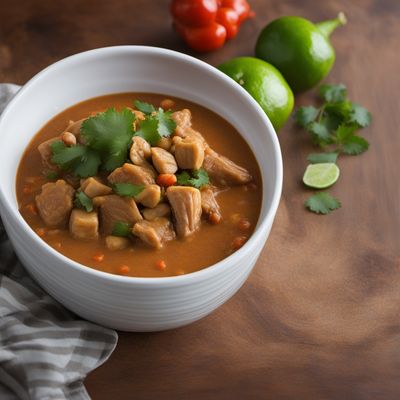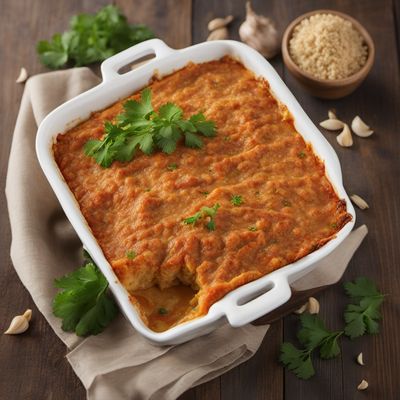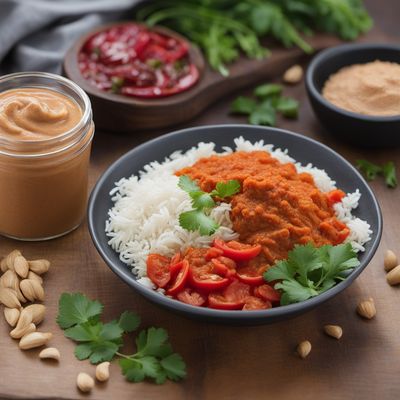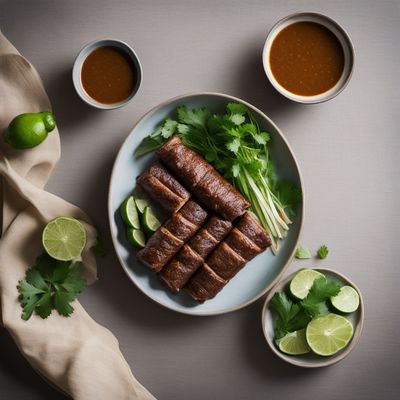
Ingredient
Peanut butter
Creamy Nutty Spread
Peanut butter is a creamy and indulgent spread made by grinding roasted peanuts into a smooth or chunky paste. It has a rich and velvety texture with a distinct nutty flavor. Peanut butter is a staple in many households and is used in a variety of sweet and savory dishes, from sandwiches and cookies to sauces and dressings. It is a good source of protein and healthy fats, making it a popular choice among health-conscious individuals.
Origins and history
Peanut butter has its origins in the United States, where it was first introduced in the late 19th century. It gained popularity quickly due to its delicious taste and versatility. Peanuts themselves are native to South America, where they have been cultivated for thousands of years. Today, peanut butter is enjoyed worldwide and is a common ingredient in many cuisines.
Nutritional information
Peanut butter is a nutrient-dense food that provides a good amount of protein, healthy fats, and essential vitamins and minerals. It is a good source of monounsaturated fats, which are heart-healthy fats that can help lower bad cholesterol levels. Peanut butter also contains fiber, vitamin E, magnesium, and potassium. However, it is important to consume peanut butter in moderation due to its high calorie content.
Allergens
Peanut butter is known to be a common allergen, particularly among children. It can cause severe allergic reactions in individuals with peanut allergies. It is important to read labels carefully and avoid peanut butter if you have a known allergy or sensitivity. Cross-contamination can also occur, so individuals with severe allergies should be cautious when consuming products that may contain traces of peanuts.
How to select
When selecting peanut butter, look for brands that use high-quality peanuts and minimal additives. Opt for natural or organic varieties that do not contain added sugars, hydrogenated oils, or preservatives. Check the ingredient list to ensure that peanuts are the main ingredient and avoid brands that add unnecessary fillers or artificial flavors.
Storage recommendations
To maintain the freshness and quality of peanut butter, store it in a cool and dry place, away from direct sunlight. It is best to keep it tightly sealed to prevent the natural oils from separating. If the peanut butter does separate, simply stir it back together before using. Refrigeration is not necessary, but it can help extend the shelf life of natural peanut butter.
How to produce
Peanut butter can be produced at home by roasting peanuts until golden brown, then grinding them in a food processor or blender until smooth. The homemade version allows for customization, such as adding honey or salt to taste. However, it is important to note that homemade peanut butter may have a shorter shelf life compared to store-bought varieties.
Preparation tips
Peanut butter can be used in a wide range of dishes and recipes. It is commonly used as a spread for sandwiches, toast, and crackers. It is also a key ingredient in desserts like cookies, brownies, and cakes. Peanut butter can be incorporated into savory dishes as well, such as sauces, dressings, and marinades. It can also be enjoyed on its own as a quick and satisfying snack.
Substitutions
Almond butter, cashew butter, and sunflower seed butter are suitable substitutes for peanut butter. These alternatives have similar creamy textures and nutty flavors, making them great options for individuals with peanut allergies or those looking for variety. However, it is important to note that the flavor and consistency may vary slightly.
Culinary uses
Peanut butter is a versatile ingredient that is used in a wide range of culinary applications. It is commonly used in sandwiches, cookies, smoothies, and sauces. It adds a creamy and nutty flavor to both sweet and savory dishes. Peanut butter is also a popular ingredient in many Asian cuisines, where it is used in dishes like satay sauce and peanut noodles.
Availability
Peanut butter is widely available in grocery stores, supermarkets, and specialty food stores around the world. It is a common pantry staple in many households. Additionally, peanut butter can be purchased online from various retailers.
More ingredients from this category
Recipes using Peanut butter » Browse all

Fluffy Peanut Butter and Marshmallow Sandwich
Peanutty Cloud Delight: A Fluffy Twist on a Classic American Sandwich

Malay-style Chilled Noodles with Spicy Peanut Sauce
Serenade of Coolness: Malay-inspired Chilled Noodles with Fiery Peanut Sauce

Palauan-style Mole Poblano
Spicy and Savory Palauan Mole Poblano: A Fusion of Mexican and Palauan Flavors

Fool's Gold Paratha
Golden Paratha Delight: A Fusion of American Indulgence and Indian Flavors

Dovi-inspired Peanut Stew with a Caribbean Twist
Caribbean Peanut Stew: A Fusion of Flavors

Giraumon Gratin with Peanut Sauce
Creamy Giraumon Delight with a Nutty Twist

Gari Foto with Spicy Peanut Sauce
Savory Delight: Gari Foto with a Spicy Peanut Twist

Ndambé Stew
Savory Senegalese Peanut Stew

Senegalese-style Bánh ướt
Savory Senegalese Rice Crepes with Spicy Peanut Sauce

Romanian Chocolate Peanut Bars
Decadent Romanian Peanut Delights

Classic PB&J Delight
The Perfect Harmony: A Twist on the Classic PB&J Sandwich

Tanzanian-inspired Beef Rolls with Spiced Peanut Sauce
Savory Tanzanian Beef Rolls: A Fusion of Flavors